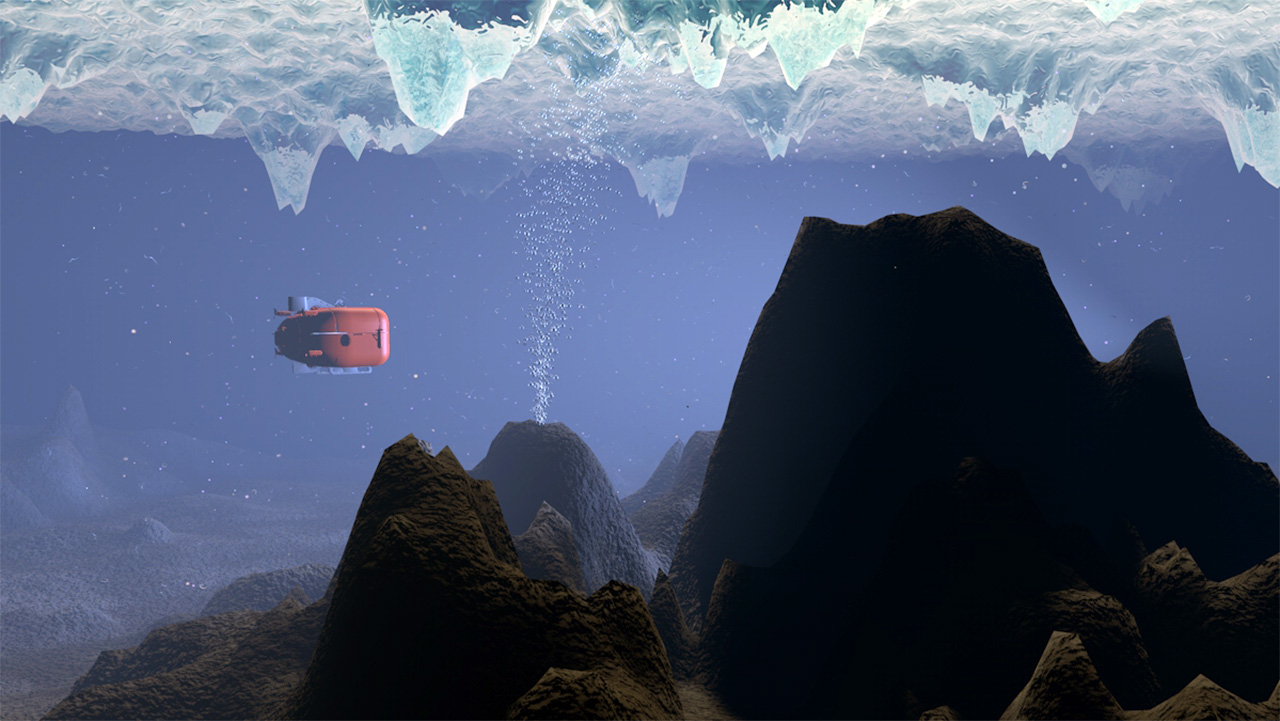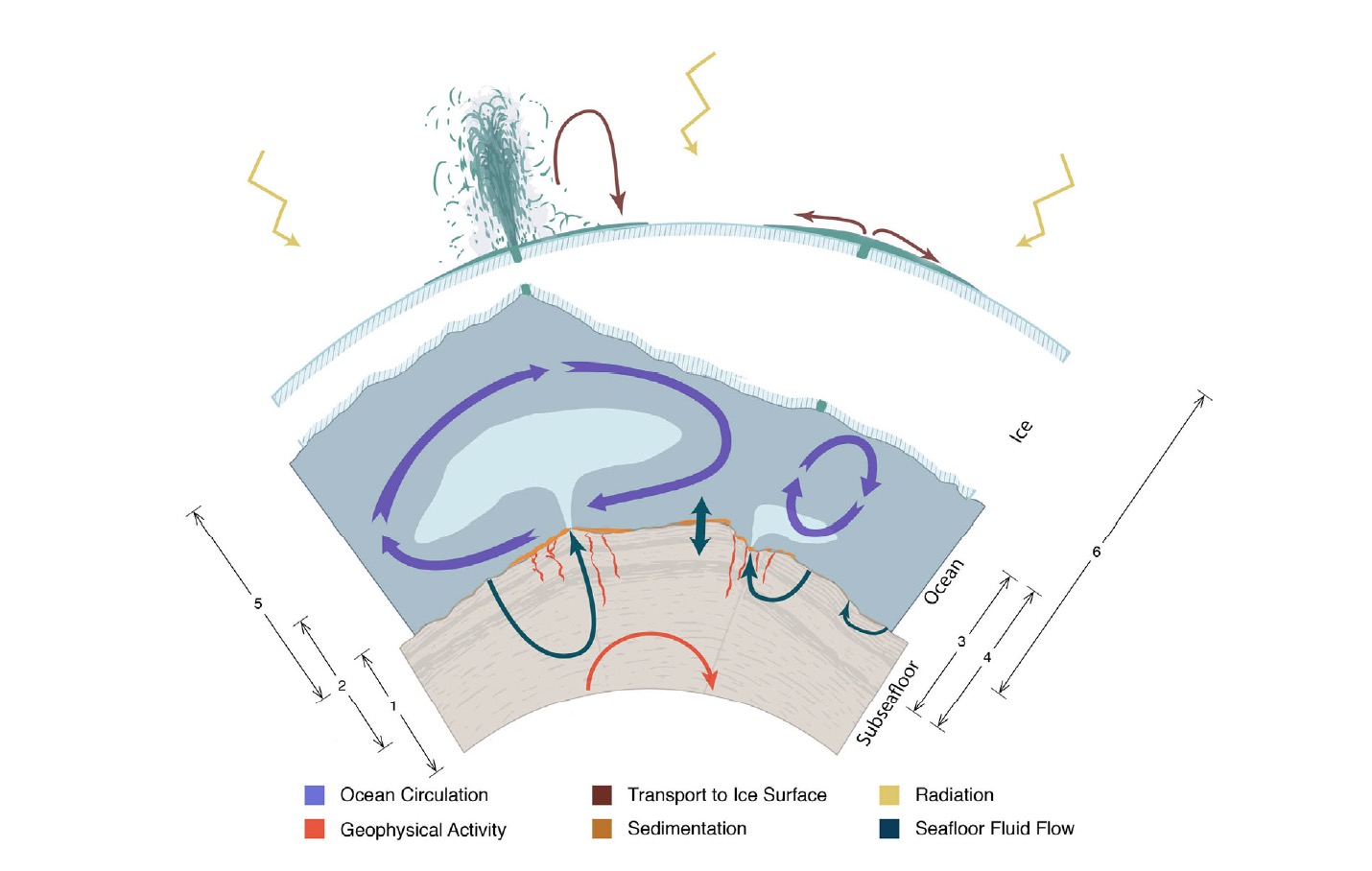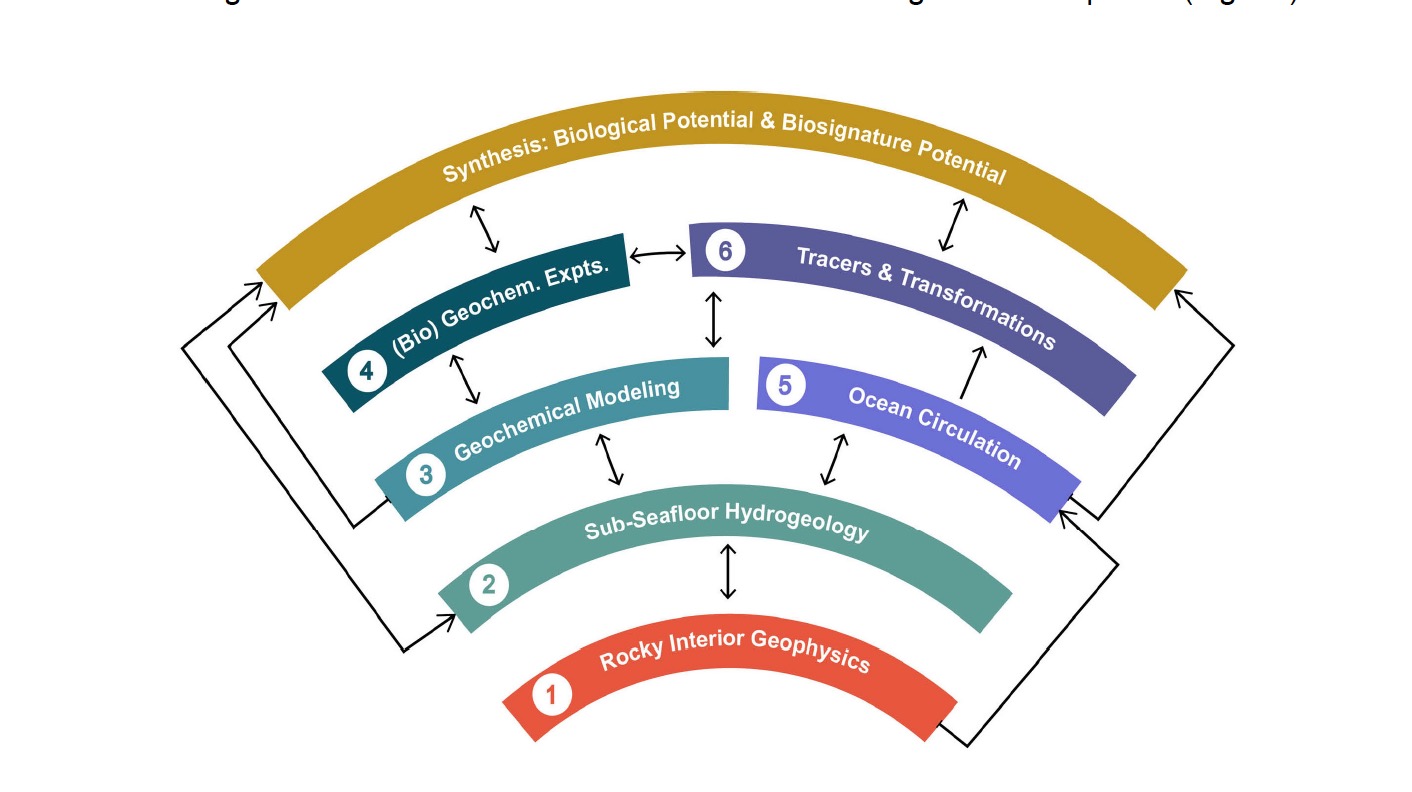Exploring Ocean Worlds (ExOW)
Ocean System Science to Support the Search for Life

Since the confirmation of an ice-covered ocean on Jupiter’s moon Europa during the Galileo Mission, ocean worlds beyond Earth have become a focus of research for NASA’s Planetary Science Division. This has been driven largely by the increasing realization that many planetary bodies in the outer solar system hold the potential to host life that arose independent of Earth.
In recent years, NASA has selected instruments for the Europa Clipper Mission, which will make a flyby of that moon and begun a new study for a spacecraft that could land on Europa. In parallel, NASA's Cassini Mission has stimulated increasing interests in Saturn's moons Titan and Enceladus all of which is been captured in a new Roadmap to Ocean Worlds released by the agency in 2019.
The search for life is prominent in all of these activities, making this an opportune time to bring key scientific fields together into a new, collaborative partnership that will provide the scientific underpinning and context needed to explore these worlds in an informed, rigorous manner. Central to this partnership are the fields that make up the ocean sciences. In short, the insights we gain by studying our own ocean world will help set the stage for more effective exploration of oceans beyond Earth.
The project has two primary objectives:
- To quantify the importance of physical and (bio)geochemical processes on an ocean world to its biological potential and biosignature potential.
- To identify which observable features would most strongly determine an ocean world’s biological and biosignature potential.
Our team will address these objectives by constructing a comprehensive theoretical framework—one that is informed and tested by experimental efforts—that connects the broad spectrum of physical and chemical processes likely governing flows of material and energy within an ocean system to determine the biological and biosignature potential of that world. We will focus exclusively on ocean worlds where liquid water oceans are in contact with an underlying rocky seafloor because our experience here on Earth has repeatedly shown that sub-seafloor fluid flow presents the best conditions to release chemical energy stored in geologic formations.
Our approach is designed to provide a predictive framework applicable to all ocean worlds of this type, but will have clear, immediate and direct relevance to two high priority astrobiology targets: Europa and Enceladus.
Throughout the project, theoretical modelers will work closely with experimentalists to identify key processes and conditions that contribute to the system-wide function and evolution of ocean worlds. We have assembled a team with a diversity of expertise in astrobiology together with leaders in the study of processes across the various interfaces of the Earth-Ocean-Life system to work across a network of six Investigations:
Each Investigation is inherently interdisciplinary, but, as in Earth’s oceans, we predict that it will be at the interfaces among them that our most exciting and original discoveries will be made. An innovative goal for this project, therefore, is to move beyond the modeling and experimental efforts planned for each “compartment” of the system and instead explore the feedbacks and interconnections among the Investigations and integrate them into a coherent whole, through Synthesis Activities conducted across the lifetime of the project.
By doing so, we will establish a template that will provide an estimate of the biological and biosignature potential of any ocean world—whether based on observations already obtained or those yet to be acquired. Ultimately, we hope to answer a single, overarching question: On which ocean worlds, and with what measurements, will we have the greatest potential to successfully detect the presence of life?
Principal Investigator
Chris German
Woods Hole Oceanographic Institution
Project Coordinator
Kathryn Pietro
Woods Hole Oceanographic Institution


